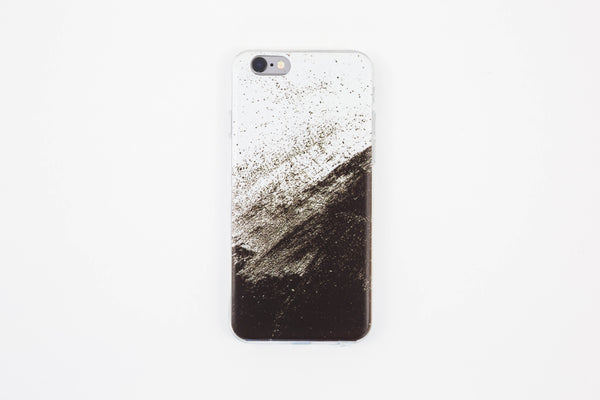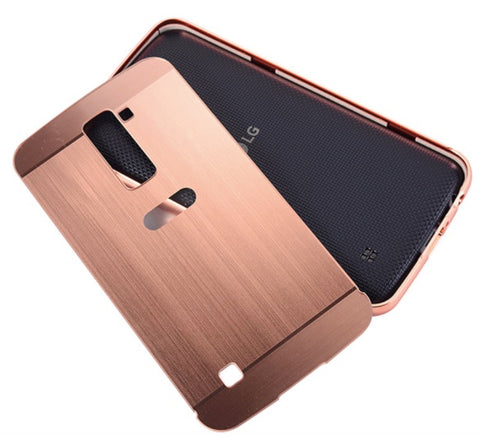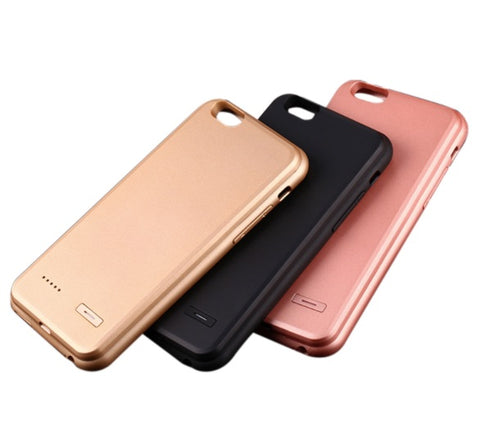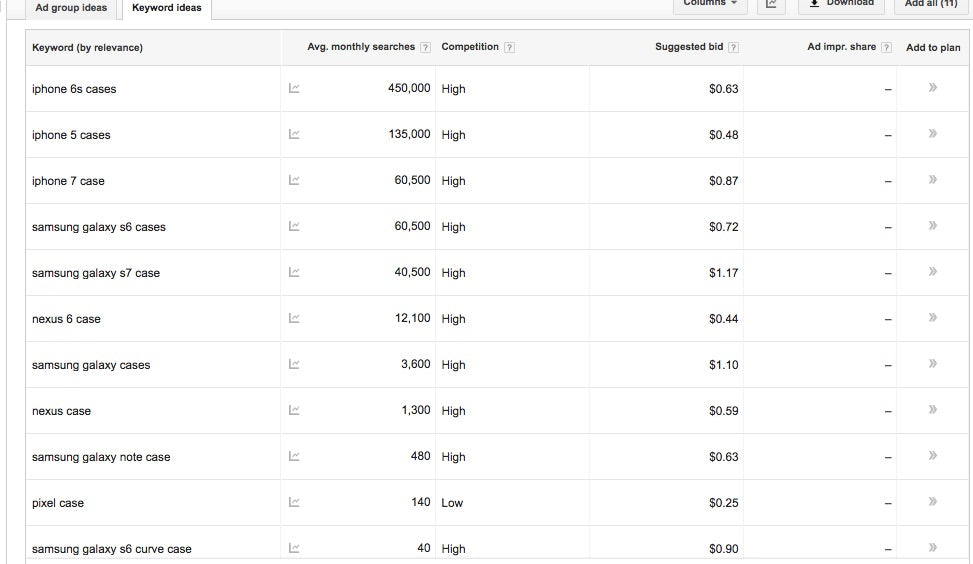Today, there aremore mobile devices than there are peoplein the world.
That means there’s ample opportunity for you to grab a slice of the growing market for smartphone accessories.
Phone cases, in particular, are easy to source and appeal to people who are looking to inject some individuality or extra functionality into the one device they can’t live without.
Building a business around making and selling your own phone cases comes with a variety of benefits:
- It’seasy to hold inventoryand ship due to their small size.
- They’rerelatively low costto produce.
- You can sell themboth online and in an offline kiosk.
- Print-on-demandto start with lower risk orbuy in bulkfor better margins.
- Every new phone model offers a new opportunityto cater to the44% of smartphone ownerswho upgrade every 2 years.
But as with any business where the barrier to entry is low, there’s going to be competition. However, all you need to succeed is a piece of this massive market.
The following is a guide that answers common questions about starting a phone case business, such as:
- What types of phone cases are there?
- Where do I get designs for phone cases?
- How do I know what phone cases/designs will be popular?
- Where can I sell my phone cases?
If making and selling phone cases is something you want to do, but you don’t know where to start, you’re in the right place.

Free: Business Plan Template
Business planning is often used to secure funding, but plenty of business owners find writing a plan valuable, even if they never work with an investor. That’s why we put together a free business plan template to help you get started.
Get the business plan template delivered right to your inbox.
Almost there: please enter your email below to gain instant access.
We'll also send you updates on new educational guides and success stories from the Shopify newsletter. We hate SPAM and promise to keep your email address safe.
How to Make Your Own Phone Cases
Before you get to creating your own phone cases, there’s a few things you’ll need to know, namely the types of phone cases out there, how to choose which phones you want to support, and how to come up with designs.
Types of Phone Cases
Some phone cases are more practical, while others are more visually appealing. Some offer protection, while others are more like a second “skin” than a case.
There are a multitude of options, but here are some of the most common types to get your started.
Slim and gel cases

Slim cases are on the thinner side and let you add an eye-catching design and some additional grip to a phone, often through a flexible, rubbery silicone gel material.
These are some of the cheapest phone cases you can produce and customize with designs, especially if you want to print them on demand (more on that later).
Bumper cases

Unlike slim phone cases, these cases usually only cover the sides/border of your phone, and are often made of a harder, shock-resistant material to protect your phone from dings and scratches.
Bumper cases can be minimalistic, only cover the edges of a phone, or they can come with an additional piece for protecting the back from scratches too.
Folio or wallet cases

Folio cases have a cover that folds over the front of your phone to protect the screen from dust and scratches, and give the phone the appearance of a small notebook.
Some even have wallet-like features, such as the ability to store cash or credit cards, while others can be turned into a stand to prop up your phone.
You’ll typically find these in a leathery material and they will likely cost more than the slim cases but also appear to more practical consumers.
Tough Cases
许多人看手机情况不作为aesthetic choice and more as a way to protect the hundreds of dollars they invested in their phone should they ever drop it.
Tough cases are bulkier and add more weight to a phone, but afford customers greater protection.
It’s important to recognize this when youwrite your product descriptionsfor tough phone cases, as anything from drop tests to details about water resistance can help give customers peace of mind.
电池的情况下

Battery life seems to be a problem regardless of what phone you have these days.
While they’re more expensive than most phone cases, battery cases are also very practical and offer a lot of utility for those moments when we wish we had just a bit more juice.
Since these cases not only protect your phone but provide some extra charge, battery cases are a good companion for models of phones where battery life is a constant complaint.
Choosing Which Devices to Focus On
It’s not just a matter of deciding what kind of phone cases you want, but what kinds of phones you want to support.
However, this can also offer an opportunity to dig into specific niches based on phone models. If you can foresee a need for cases for upcoming phones or spot any underserved smartphone types, there may also be an opportunity to consider.
While the latest iPhone models are probably a safe bet, you cantake a look at this research byDevice Atlasto see which phones are popular in the regions of the world that you want to sell in.
Alternatively, you can do some basic keyword research inGoogle’s Keyword PlannerorKWFinderto get a look at search volume as a reflection of demand for cases for specific types of phones. If you plan onusing Google AdWords to sell your products, it’s definitely worth looking into this in advance.

Where to Get Designs For Your Phone Cases
Design can be one of your biggest differentiators, especially if you’re selling the standard slim cases.
Design communities likeDribbbleare great places to shop around for designers based on the aesthetic you’re looking for. Or, if you’re looking for cost-effective designs, you can always find them onFiverr. Try to look specifically for designers that do custom phone cases.
You can also create your own design mockups in Photoshop orPhotopea, and many phone case print-on-demand services likeCaseappandPrintfulalso have phone case mock-up generators you can use.

Be wary that not all phone case suppliers will print on the sides of the case.Many will only print on the back alone, so make sure you pay attention to that during the design phase and when looking for a supplier.
Try to source several different designs so you’re not just betting on one idea, and get feedback as early as you can:
- Post your designs on image-oriented social media sites like Facebook, Instagram or Pinterest, and use engagement (likes, shares, comments) as an indicator of interest. You can even put some money into promoting your designs to a wider, more relevant audience and see which ones do best.
- Ask friends and family for their input.
- Redditis great for feedback if you're selling to a specific niche. Post your designs in a relevant subreddit (r/pugsif you're selling cases for pug owners) and the anonymity of Reddit will help you solicit good input. You can even follow up with another post when your cases are finally available for purchase.
Speaking to a niche, a group of people who feel passionately about a specific interest, through your designs will give you an edge in terms of garnering interest. After all, accessories like phone cases for many people are simply a way to show off to the world who they are.
How to Get Your Phone Cases Made
Once you’ve got some designs you feel good about, it’s time to bring them to life. Unless you're willing to invest thousands in your own printing equipment, you have three main options when it comes to getting your phone cases made.
Use a print-on-demand service
Printfulandteelaunchare just some of many services that let you print phone cases on demand. While they will eat into your margins a bit, they also take care of shipping and fulfillment so you don’t need to keep any phone cases on hand or even order them in bulk.
If you’re selling these phone cases on your own Shopify store, these print-on-demand services can integrate with your online storefront, taking care of fulfilling orders and customer support so all you need to worry about is making sales.
Whether it’s at-shirt, anenamel pin,jewellery, or phone case,validating which designspeople like can be tricky. These print-on-demand services offer a low-risk way to test design ideas, especially for slim phone cases.
Shopify Academy Course: Build a Print-on-Demand Empire
Learn how to create your own custom phone case shop in minutes. Expert Shopify merchant Adrian Morrison shares his framework for starting and launching a successful print-on-demand shop.
Enroll for freeFind a manufacturer to work with
Finding a manufacturer to work with is the route you’ll likely want to go in order to maximize your profits.
Alibabaoffers a directory of manufacturers in China who make a variety of phone case types from slim to folio to battery
While you will have to buy in bulk with a minimum order quantity that’s anywhere from 10 to over 200, you’ll have the potential to offer better prices and make more off of each sale when each case can potentially cost you as little as $1.
You can also choose to partner with a local manufacturer to appeal to consumers who are interested in supporting businesses in their own country. Either way,be sure to order a sample first before you go in on a bulk order.
It’s worth noting thatyou don’t necessarily need inventory为了使销售。销售可以使用to decide which phone cases you actually order so you’re not stuck with hundreds of cases that just aren’t selling.
Since inventory won't take up much room, if you're confident about your phone cases, you can invest in an offline presence to sell bysetting up a kart or kioskin a high traffic area like a mall.
Dropshipping existing phone cases
Instead of making your own phone cases, you can use a dropshipping model so all you really need to worry about is building a website and making sales.
The only major downsides are that you'll have far less control over the product and lower margins, but in exchange, the product, shipping and fulfillment are taken care of for you.
It's as easy as using an app likeOberloto import phone cases from Aliexpress into your Shopify store. Learn more about dropshipping with Aliexpress inThe Definitive Guide to Dropshipping With Aliexpress.
Selling Your Phone Cases Online
Now that you’ve figured out your market, your product and your supply chain, it’s time to figure out how and where to sell your phone cases.
While marketplaces like Etsy and Amazon are good places to list your phone cases, you can also open an online store to own your brand, expand your marketing efforts, and build a long-term business. And, if you want, you can even sell them offline in a kioskusing a POS system.
Open your own Shopify store—free.
As far as marketing goes, the following are recommended channels and tactics you should try, as well as resources for how to execute them:
- AdWords: Search engine marketing is a good way to reach people who are searching for phone cases for particular smartphones. The buying intention behind these searches means you’ll get the most relevant clicks through to your products and the phones you support.
- Facebook Advertising: If you’re targeting a specific interest group with your designs, Facebook ads can help you market to people who fit a certain profile.
- Instagram Marketing: Instagram is a highly visual platform, perfect for showing off your designs with the option for paid advertising as well.
- Influencer Marketing: Partnering with micro-celebrities, YouTubers, Instagrammers, etc. lets you harness their influence and established audiences to get your phone cases in front of more people.
When you'rewriting product descriptionsfor your phones,be as specific as possible in your messagingand consider the biggest selling points for your phone cases.
Anything from the material to water resistance to a video of your phone case passing a drop test can make your cases more appealing to customers beyond just the design.
Ready to Start Your Own Phone Case Business?
Don't get bogged down by the competition for phone cases. Like any other competitive market, what you need to focus on is appealing to the right niche and getting your products in front of these people.
Over time, you can figure out winning designs and phone cases, as well as ways to source them to increase your margins, so that you can double down on selling them.



